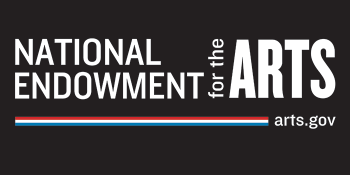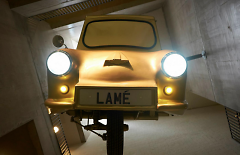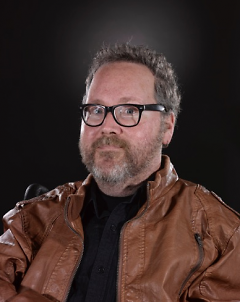Written by: Christopher R. Smit PhD, Director of DisArt Festival, Director of the Arts & Access Initiative for Kendall College of Art & Design and Associate Professor of Media Studies, Calvin College
Organizing and producing any cultural event always starts with mission. And perhaps it’s prudent to begin this conversation in a similar way.
The mission of DisArt Festival 2015 is to change perceptions about disability, one work of art at a time. We believe the creative act can stimulate important, necessary civic conversation and influence cultural change. By celebrating art practices that aim to elevate an understanding of the human condition of disability, DisArt encourages all people to appreciate the complex identities of those around them. By increasing access to exemplary examples of disability art and culture, DisArt Festival will awaken a spirit of ability equality, social inclusion, accessibility, community and a sense of place for Disabled people living in Grand Rapids (please note that I use Disabled people rather than people with disabilities in order to present disability as a formalized cultural identity as we would for African American or Latino).
The ultimate test of living in community is found in our willingness to change our minds about one another, in our ability to know each other in better ways. Because it is a unique, multi-sensory form of knowledge, art can allow us to gain an understanding beyond our own immediate experience, that is, to know the world through the perceptions of another. Art that comes from the experience of disability can thus challenge the imagination of a city in ways that bridge our physical and mental differences, confront prejudice and stereotypes, and heave us towards a new community.
Navigating aesthetic and cultural realities can be arduous when it comes to disabilities because we have been socialized to fear physical and mental differences. Ironically, it has often been art itself that has taught us these negative perceptions: Dickens’ Tiny Tim, cinematic platitudes in melodramas like "The Miracle Worker," and even television shows like "Life Goes On" have painted a proverbial picture of disability that often smacks of pity, mystery and confusion. In order to alleviate these media mistakes, important dialogue must happen between able-bodied and disabled people in the real world.
I would like to suggest here that the cultural experience of disability itself is one of dialogue – the different body/mind exists within, and because of, its constant conversations with a world that at times accommodates, and at other times oppresses. Disability is an essentially dialogical experience because its meaning is “consummated,” to use the words of philosopher Mikhail Bhaktin, by the dynamic interaction between personal experience and public expectation. In reality, the dialogue between experience and expectation becomes the daily grind that Disabled people must traverse. It is the social dialogue, both spoken and unspoken, that underlie the many tactics employed within Disability Culture in order to survive, maintain, and thrive as a political collective.
Disability Art, in its many forms, animates this dialogue.
As Disabled people have acquired more social and political rights, the Disabled dialogical voice in the United States is more authentic today then it is ever been. Put another way, it is the Disabled voice that has begun to guide the dialogue of expectation and experience. Disabled people are working and creating at a much higher rate than ever before –this has drastically changed the art being made in the world of Disability Arts. Never before has there been such a surge of what Disability Studies scholar Tobin Siebers calls “a disabled aesthetic,” or a creative matrix centered on articulating the idiosyncratic expression of mental and physical differences.
While the above goals sound promising, the political reality is the constraints of convincing the mainstream ablest imagination of the value of this new empowered Disability narrative. The contemporary world of mobile technology has the paradoxical condition of changing rapidly while still grasping tightly to cultural constructs that allow for the social comfort of the majority. In other words, our world changes shallowly, allowing for advancements in efficiency but not in terms of cultural acceptance of difference. In addition, selling the empowered Disability narrative might allow able-bodied people to feel as if they are “off the hook,” a condition that allows the perpetuation of obliviousness to the living conditions of Disabled people in the USA.
Grand Rapids is a place where new ideas come to roost, where ingenuity and philanthropy dance together under the guise of innovation and forward thinking. Indeed, Grand Rapids may be the only city in the United States where DisArt Festival could happen. ArtPrize, LaughFest, our annual Festival of the Arts and many other cultural happenings have blazed the trail upon which DisArt now rides. Consequently, we benefit from a local culture whose members are well-equipped to engage with new concepts. We are a place where change can happen.
According to estimates made by local agencies, 14-20% of our 200,000 or so residents in Grand Rapids have a form of disability. Put in the context of my comments here, there is already a thriving dialogue happening, consciously and unconsciously, about the experience of disability within our city. DisArt has been networking with the many organizations in this town that serve Disabled people of all types: organizations like Disability Advocates of Kent County, Down Syndrome Association of West Michigan, Fashion Has Heart, Artists Creating Together, Arts in Motion Studio and many others are positively affecting the lives of Disabled Grand Rapidians.
But a place is more than its institutions. This place, our place, is about us. And it is on this individual level that we must begin to challenge our imaginations about disability. In order to do this, we need to take an active role in the dialogue. Talk to people who are different from you. Seek common threads among your community members. Listen to the dialogue of disability.
Disability 101 will be a four-part series by Dr. Smit, director of DisArt Festival 2015. Each installment will help readers grapple with the cultural and philosophical questions that surround physical and mental difference in hopes of enriching our city's experience of this unique event planned for April 10-25, 2015.
The Rapidian, a program of the 501(c)3 nonprofit Community Media Center, relies on the community’s support to help cover the cost of training reporters and publishing content.
We need your help.
If each of our readers and content creators who values this community platform help support its creation and maintenance, The Rapidian can continue to educate and facilitate a conversation around issues for years to come.
Please support The Rapidian and make a contribution today.



